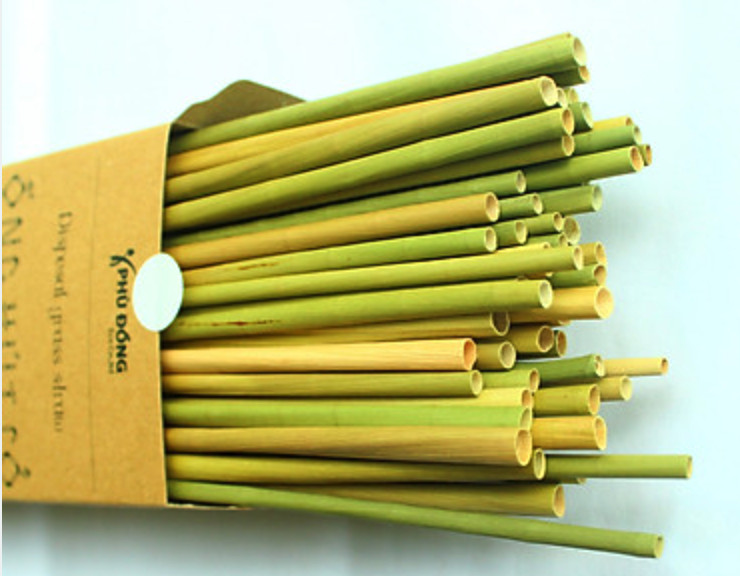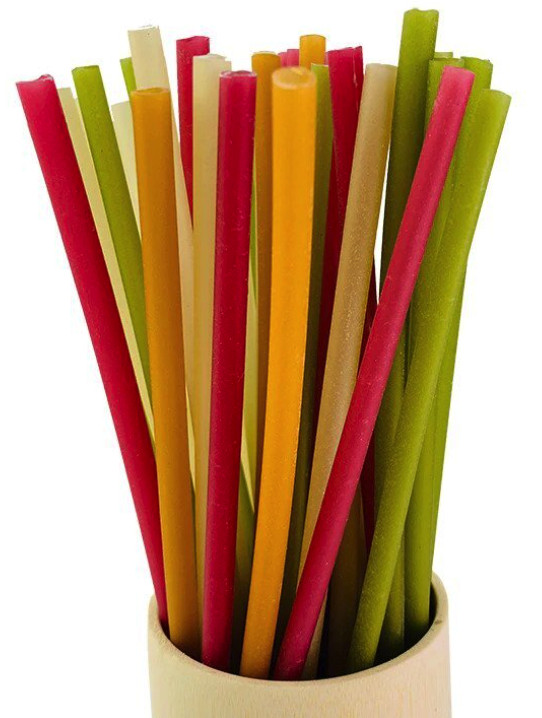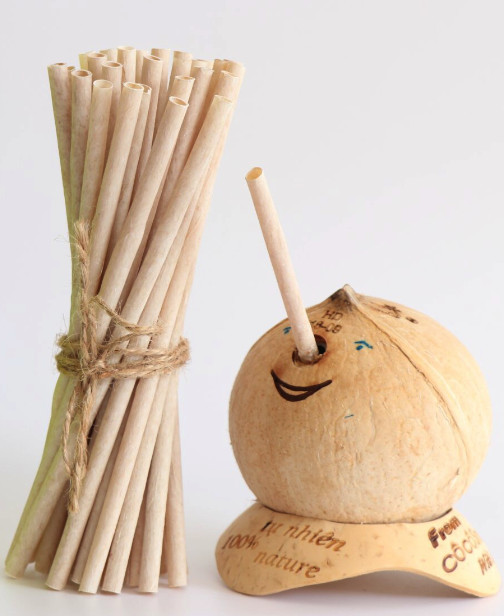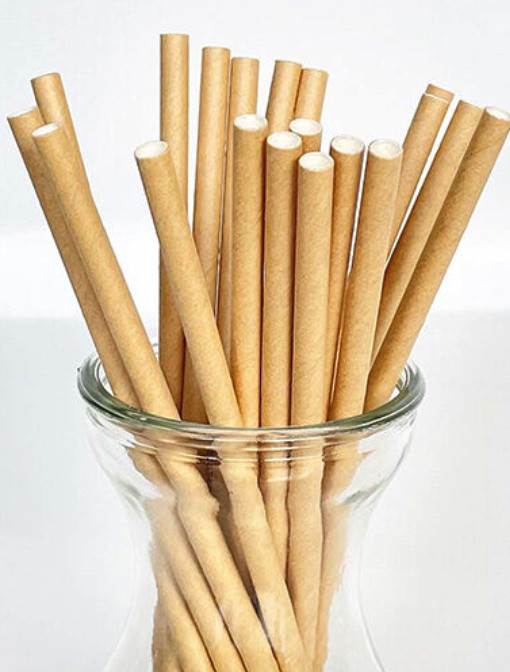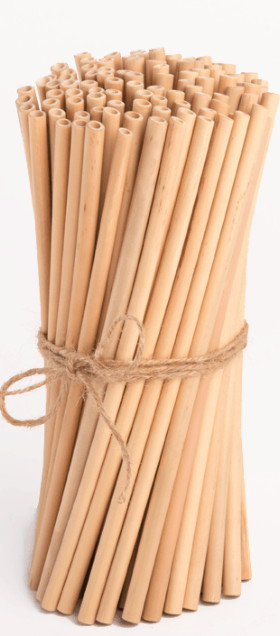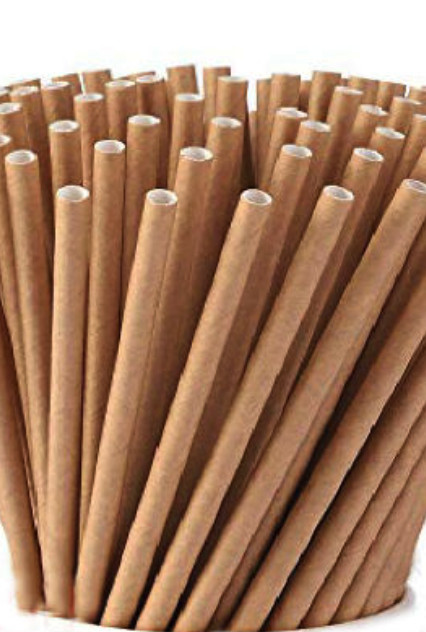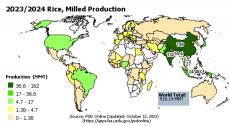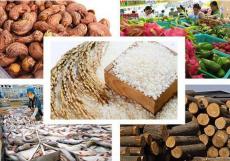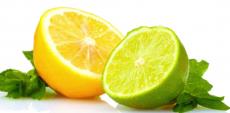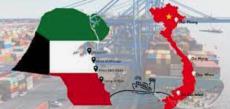Types of Organic Straws to Replace Plastic Straws That You Should Use
Are you worried that using plastic straws pollutes the environment? Are you a smart consumer who always cares about products that are safe for your health? Let's learn about organic straw products that are perfect replacements for plastic straws in the article below!
What is an Organic Straw?
Organic straws are straw products made entirely from natural materials, do not contain chemicals or toxic substances and are biodegradable to help protect the environment. In the Vietnamese market, there are many types of organic straws produced and have become one of the smart consumption trends in modern life.
Why Should You Use Organic Straws to Replace Plastic Straws?
Plastic is a popular material in manufacturing because of its durability, flexibility and ease of shaping. However, plastic straws are one of the leading causes of serious environmental pollution. Every year, more than 8 million tons of plastic waste is dumped into the ocean, of which plastic straws are one of the 10 items that pollute the ocean the most. After only a few minutes of use, plastic straws must last hundreds, even thousands of years, before they can completely decompose in nature.
Unlike plastic straws, organic straws are made from 100% natural materials so they can biodegrade in a short time. Not only that, organic straws do not contain plastic, are non-toxic, and are safe for users' health. For the sake of the living environment and for our own health, let's use organic straws to replace plastic straws!
Advantages and Disadvantages of Organic Straws
To start a new habit, everyone must go through a period of getting used to it, adapting, and then unconsciously performing that habit. Similar to gradually switching to using organic straws to replace plastic straws, you also need time to adapt to this change. Here are some advantages and disadvantages of organic straws to help you quickly overcome this "getting used to" stage!
Advantage:
- Organic straws are made entirely from natural materials, do not contain plastic, have a fast decomposition time, and do not pollute the environment.
- The product does not contain chemicals or toxic substances, and is completely harmless to health
- Organic straws have the ability to completely decompose in the natural environment after only a short time of discharge.
Defect:
- Organic straws are quite difficult to preserve, store and transport
- This product still has some limitations in design and color.
- Popular Types of Organic Straws on the Market
Self-destructing grass straws:
Grass straws are natural straws made from materials very close to humans, the grass plant. This type of grass is widely used in the production of handicrafts, cushion weaving, hat making,... and now straws. Grass straws have many outstanding advantages compared to other straws: they can easily decompose after being discharged into the environment and become nutritious compost for soil and plants.
Edible rice straws
An equally popular type of straw is the rice straw. This is an edible straw made from Vietnamese rice grains that are absolutely safe for the user's health. Rice straw products can also be eaten, a completely special feature compared to other types of organic straws.
Coconut straws
Coconut straws are manufactured with exclusive technology in Vietnam, made from 100% fermented coconut water, giving users many interesting experiences. Coconut straws are loved because the product has a unique ivory white color and can biodegrade within 3 - 6 months.
Coffee grounds straw
Currently, on the market, coffee straws are also of interest to many consumers. This is a type of straw made entirely from coffee grounds. The straw has a brown color similar to the color of coffee, suitable for many types of drinks. The product is 100% environmentally friendly, completely decomposing within 6 months.
Sugarcane bagasse straw
After being processed according to regulations, bagasse will be utilized to produce environmentally friendly bagasse straws. Bagasse straws have a pleasant sweet scent, especially suitable for drinks such as juices, cocktails, smoothies, etc. Bagasse straw products have a bright yellow-brown color, do not soften or disintegrate in water, so considered the perfect replacement for plastic straws.
Bamboo straws
Taking advantage of the popular bamboo raw materials in Vietnam, bamboo products appeared and became a trend in green consumption. The biggest advantage of bamboo straws is their high durability and can be reused many times. Bamboo straws are small, lightweight, easy to clean and suitable to carry with you for use when needed.
Paper straws
The last product on the list of popular organic straws is paper straws. Paper straws have been on the market for a long time, even before plastic straws. Starting from the simple idea of Mr. Marvin Stone, an American, he rolled a piece of paper around a pencil, fixed it by taping, thus the first paper straw was born. He was also granted a patent for this paper straw in 1888. After the introduction of plastic straws, they dominated the straw market because paper straws, when used for a period of time, will disintegrate in water. However, with many serious consequences, paper straws began to be produced and trusted again.
Gradually limiting single-use plastic products and supporting organic products is a smart choice, helping to protect the living environment, protect the ocean and protect planet Earth for future generations.

Vietnam : Import Export 2022
In 2022, Vietnam’s merchandise trade with Asia will reach 475,29 billion USD, up 9,6% compared to 2021, continuing to account for the highest proportion (65,1%) in the total value—import and export of the country.
1. Overview:
In 2022, the total import-export value of Vietnam's goods reached 730,2 billion USD, up 9,1% (equivalent to 61.2 billion USD) compared to 2021. The export value is 371,3 billion USD, up 10,5%, corresponding to 35,14 billion USD increase over the previous year; import value was 358,9 billion USD, up 7,8%, equivalent to 26,06 billion USD.
The balance of trade in goods for the whole year 2022 reached 12,4 billion USD, The General Department of Customs recorded the total import and export value of foreign direct investment (FDI) enterprises in 2022 to USD 506.83 billion, up 9,3% (equivalent to USD 43,22 billion) compared to 2021.
The export of goods of FDI enterprises in 2022 of FDI enterprises to USD 273,63 billion, an increase of 11,6% (equivalent to an increase of USD 28,5 billion) compared to 2021. It accounted for 73,7 % of total export value of the country.
2. Import-Export Market
In 2022, Vietnam's merchandise trade with Asia reached 475,29 billion USD, up 9.,% compared to 2021, continuing to account for the highest proportion (65,1%) in the total value—import and export of the country.
The import-export value between Vietnam and other continents is respectively: the Americas: 153,73 billion USD, up 10,5%; Europe: 75,45 billion USD, up 2,8%; Oceania: 17,62 billion USD, up 24,3% and Africa: 8,1 billion USD, down 3,9% compared to 2021.
3. Export
In 2022, the total export value of Vietnam reached 371.3 billion USD, up 10.5%, corresponding to 35,14 billion USD increase over the previous year. Which, other machinery, equipment, tools, and spare parts increased by 7,43 billion USD; footwear of all kinds increased by 6,15 billion USD; textiles and garments increased by 4,82 billion USD; computers, electronic products, and components increased by 4,74 billion USD; seafood increased by 2,04 billion USD.

